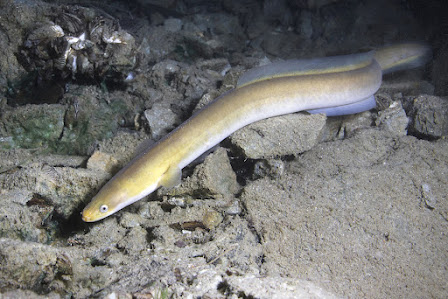The eel has a future and fishermen can have a future alongside the eel. The Coastal Action Group of the Aveiro Region considers that clues have been found to “establish knowledge that provides for its sustained exploitation, that is, a continued fishing over time that does not contribute to the extinction of the species”.
The data collected lead the authors of the study to recommend the creation of “a pilot intervention area for the recovery of the eel population and the sustained management of its exploitation, through interventions to be developed in the short-medium and medium-long term”. term".
With these steps, it is assumed that in a horizon of 5 to 10 years it will be possible to obtain “more reliable results on the state of the population and eventually the extension of the increase in fishing effort”.
In the chapter dedicated to restocking, the researchers argue that fish farms can give “a boost to the production of eels” where, in addition to the natural entry, “pigmented eels should be introduced at the beginning of the yellow eel”.
The study also advocates defining “privileged areas for the natural growth of the eel”, such as the southern half of the Mira channel, from Vagueira to Areão, and the northern part of the S. Jacinto channel, above the Varela bridge.
“These areas must be repopulated with at least half of the yellow eel production of the fish farms. This measure is intended to increase eel stocks in the regions and improve catches by professional fishermen licensed to fish especially in these areas. Regarding the silver eel produced in fish farming, about 80% must be returned to the sea to follow the migration for reproduction”.
Another bet is the extension of the plan to the Vouga River Basin, since the eel can take advantage of areas other than those of the Aveiro estuary, suggesting actions “in obstacles to migration, in the recovery of habitats, in the control of fisheries, in restocking and in natural predators.
In order to improve the quality and control of production, the researchers say that dispersion makes it difficult and they suggest the creation of specific and more restricted areas such as the Areão region, in the Mira channel, as a solution to better control the process.
Preventive measures
“Although there is a slight tendency towards recovery of the fishing stock, that is, the amount of eels available in the Ria de Aveiro to be fished, we do not know whether the positive trend verified is consolidated or is a random phenomenon”. Not being sure about the sustainability of the recovery of the stock, the researchers suggest that, in a preventive way, “the legal norms in force, restricting the commercial fishing of eel in the Ria de Aveiro, be maintained and supervised”.
In the case of glass eel with a total ban on fishing; in the case of yellow eels and silver eels, limit the minimum capture size of specimens to 22 cm. The suggestions talk about freezing the attribution of new licenses for gear aimed at capturing eels and maintaining the closed period, between October and December, to allow the escape of breeders (silver eel).
The control of fishing activities is another challenge, with the completion and delivery of a fishing log, with an indication of the weight caught, broken down by yellow eel and silver eel, and the region where fishing is carried out. This is a fisherman's job.
In Auctions with daily registration of the weight landed, broken down by yellow eel and silver eel and registration of merchant buyers who purchase eel fish.
In the case of market traders, with a record of an eel supply diary, indicating the weight purchased, broken down by yellow eel and silver eel, and the supplier (fisherman or intermediary).
For restaurants, registration of an eel supply diary is required, indicating the weight purchased, broken down by yellow eel and silver eel, and the vendor who supplied it.
As for recreational and sporting eel fishing, the researchers suggest a “total ban”.
Conclusion
In the summary, it is certain that the activity “can be attractive from an economic point of view”, taking into account the jobs it can create and the financial and tourist return for the region.
“It could be a source of conversion for lagoon fishermen, who, seeing their fishing licenses restricted and having a good empirical knowledge of the eel, can be an asset in the production of the species”.



Comments
Post a Comment